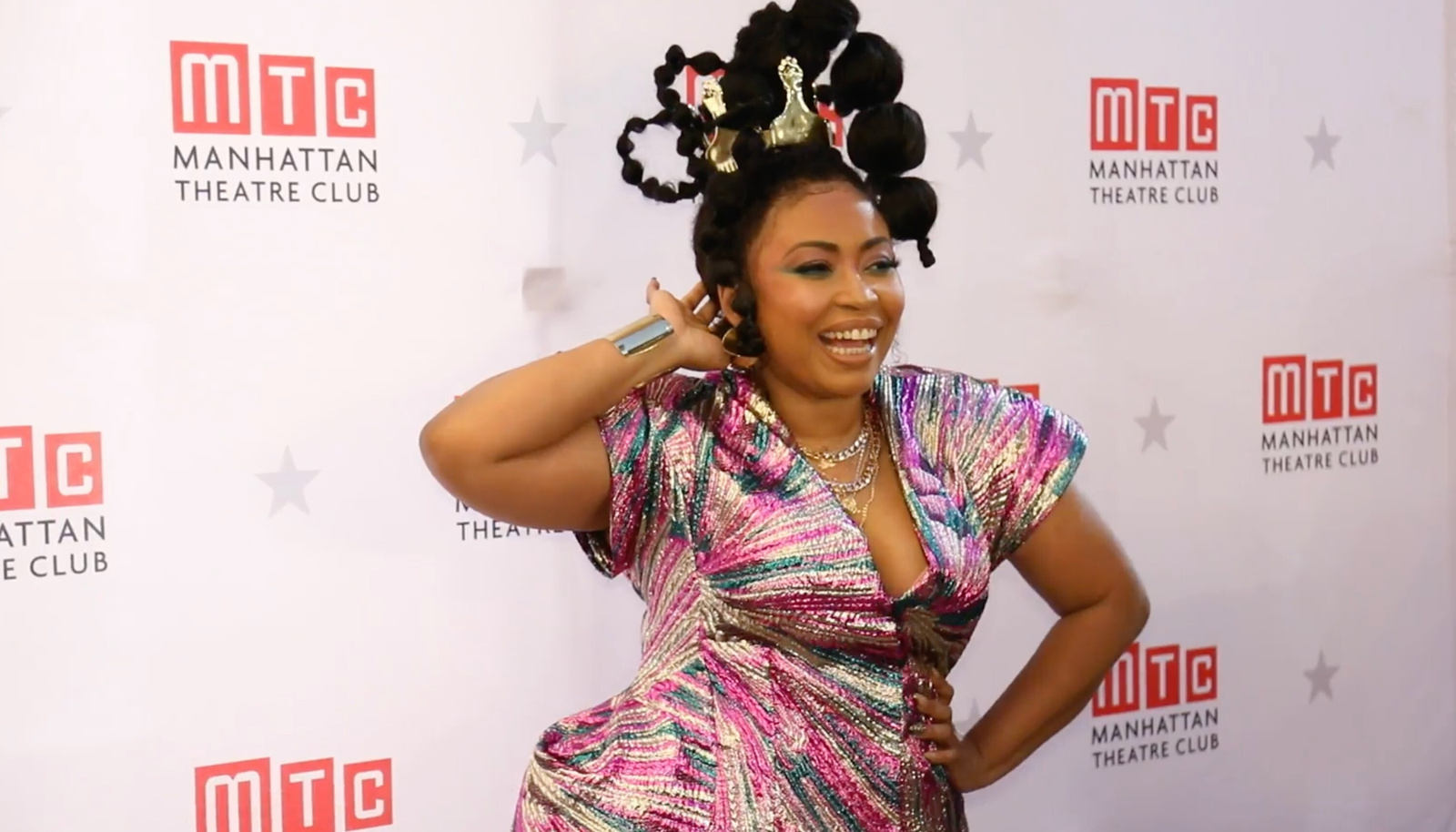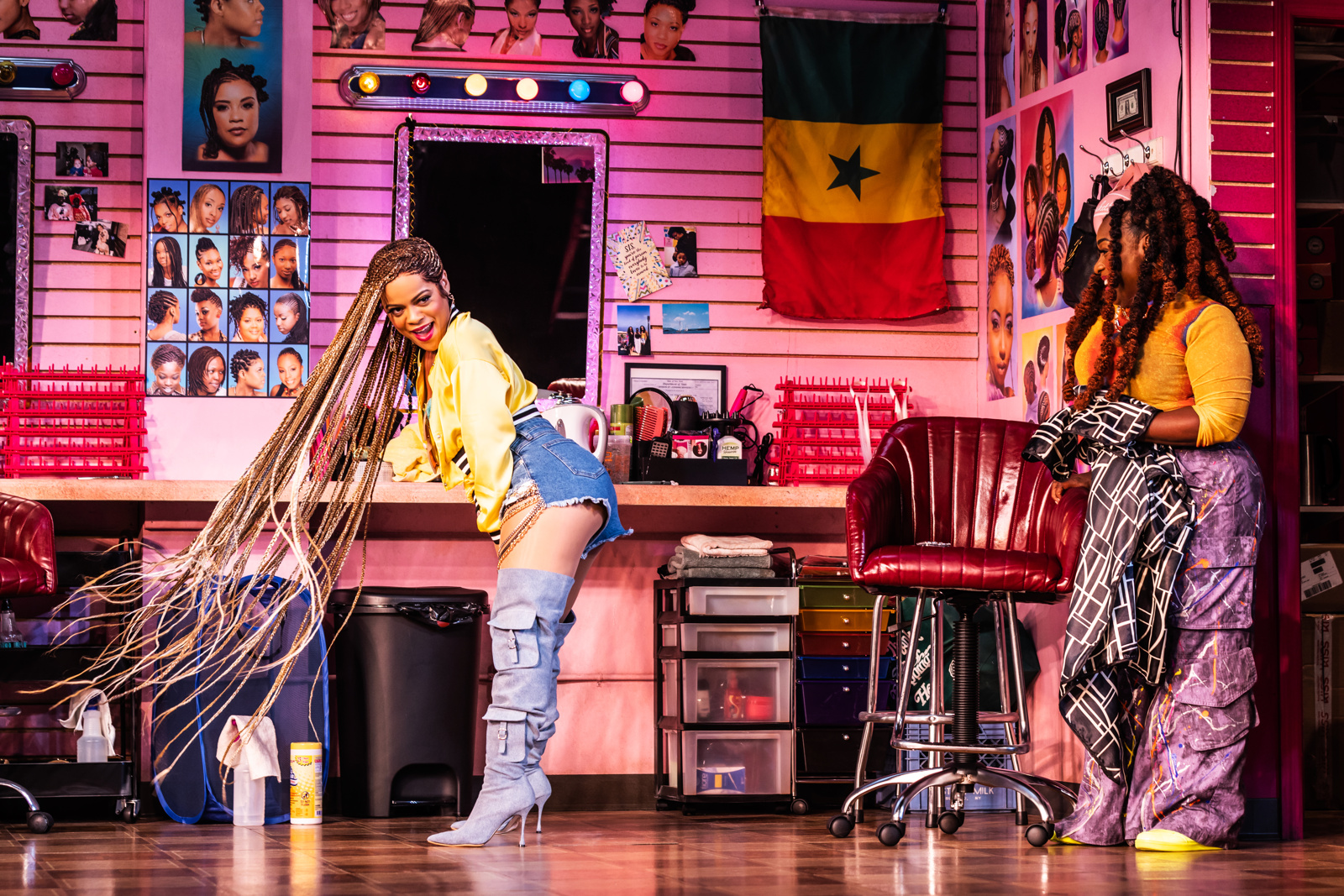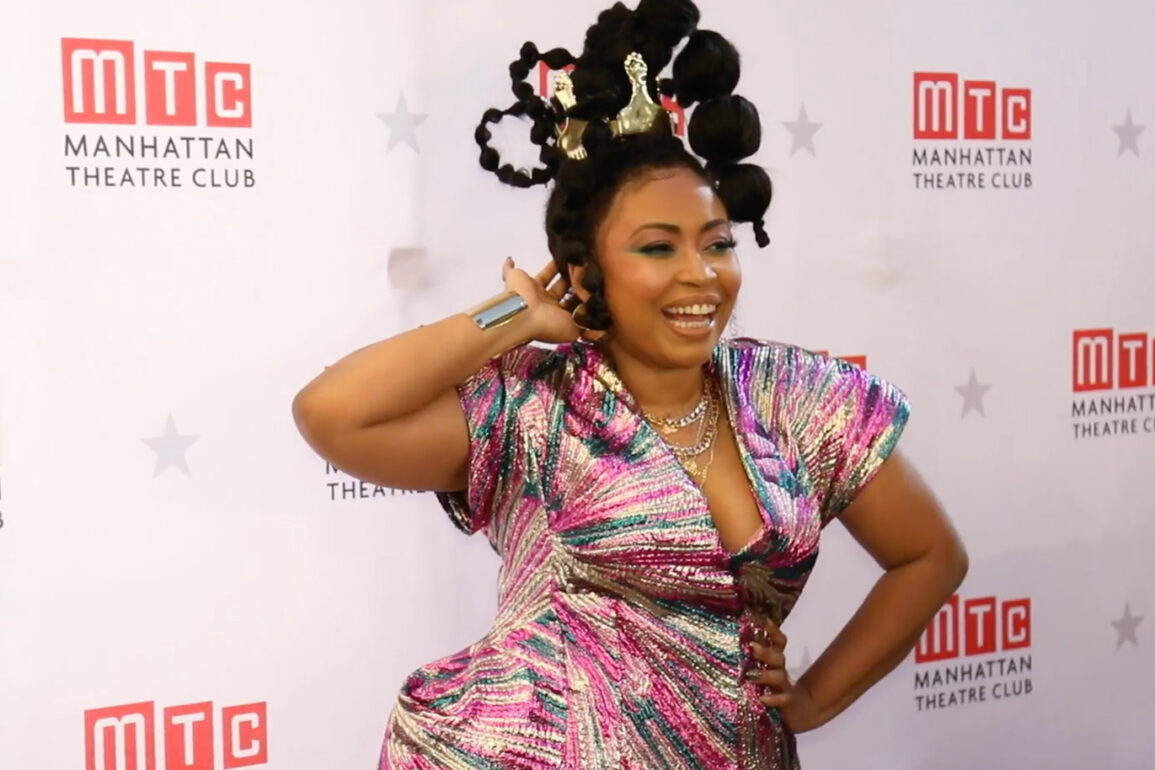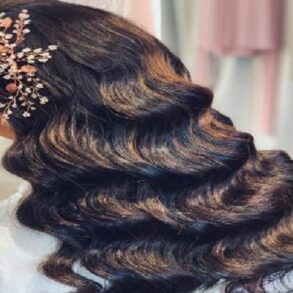Jaja’s African Hair Braiding, this season’s hit comedy by Jocelyn Bioh, pulls off the most dumbfounding magic trick on Broadway. Now, before Harry Potter’s Dementors or Aladdin’s magic carpet take offense, stand them against the feat of fashioning a whole head of micro braids…in plain sight…in under 90 minutes. They’ll humbly concede.

Hair and wig designers are the silent storytellers of the theater—molding milieu with subtle aesthetics and projecting personae to the rear of a thousand-seat proscenium. They craft the world of a show, but from the fringes (no pun intended). This puts Nikiya Mathis, wig designer for Jaja’s African Hair Braiding, in a unique position. In Bioh’s play, which is set entirely within the confines of the Harlem shop that gives the piece its title, her work doesn’t just get an unusually bright spotlight—it is the engine, the conflict, and often, a character.
“The show takes place over the course of an entire day,” Mathis explains to Broadway.com Managing Editor Beth Stevens on The Broadway Show. “They’re in there in the morning and they leave at night around or after 9pm. So how do we show the progression of hair throughout what would be an eight, nine, 10-hour process in 90 minutes? That’s where the magic of the wigs and the wig-making and even the direction come into play.”
Mathis goes so far as to call the play “a magic show.” But unlike your typical illusionist entertainment, none of Jaja’s tricks are done for the sake of spectacle. Jennifer, the character with the painstaking micro braids (played by Rachel Christopher), makes her exit after warmly announcing, “I feel like I moved in for the day.” And as a settler in this bustling ecosystem, that means hearing (or overhearing) life stories, getting caught in the crossfire of interpersonal drama, and forging real bonds with the women—at Jaja’s, a group of West African immigrants—whose hands braid until they bleed. Though Mathis jokingly describes Jennifer’s wig as “the bane of my existence,” she’s accepted the challenge, knowing that her objective is to translate an emotional arc into something visual and tangible. “We have to show the progression,” she maintains. “We need to see their hair when they walk in, and then we need to see their hair when they walk out.”
The appeal of Bioh’s play is that, for some, it’s a hyper-familiar experience, and for others, it’s a peek inside the cultural and political weight tied to even the most capricious hairstyles. “You walk in and the first thing you see is a hair book,” says Mathis, describing how the Samuel J. Friedman Theatre replicates the experience of stepping into a real braiding salon. “That was important to me because Black women will change their hair: One day, it’ll be here,” she says, pointing to the crown of her head, “one day, it’ll be Beyoncé braids down to the floor.”
Beyoncé’s iconic Lemonade braids figure prominently in the play, and Mathis’s iteration is faithful down to the smallest detail: “Beyoncé did the crinkly ends, so we did crinkly ends.” It may sound trivial, but the cultural touchstones that shape today’s Black hairstyles are as profound and symbolic as their ancestral African influences. “On the continent of Africa, we did traditional and creative cultural styles that were really intricate,” says Mathis. “I feel like that tradition has been passed on to African-Americans in the way we design our hair. So, it was important for me to show a range of styles.”

From traditional box braids to Afro-pop and Afro-futuristic designs, Mathis’s array of wigs puts on visual display the ways in which Black women (and men too) use hair as a vehicle for creative expression and self-determination. But naturally, where there’s liberation, ignorance isn’t far behind. Fortunately for Mathis—who began her theatrical career as an actor—necessity is the mother of invention.
“I feel like I’ve experienced Black hair or natural textured hair not be appreciated or supported, or undermined in certain ways,” Mathis reflects. “I have an MFA in acting from NYU, and when I was there, I remember I would do my classmates’ hair for shows and I would be thinking, ‘Why is nobody doing our hair?’” Mathis continued to step in as de facto hair stylist even in her professional acting jobs. “I got out of school, did my first professional production, and there were maybe six black women in the show at a major regional theater—and nobody there could do cornrows. Things like that kept happening.”
A lack of knowledge about Black hair, and reticence to admit to that knowledge gap, propagated a pattern of Black performers’ hair simply being ignored until the final stages of a production. “They’ll wait to tech,” Mathis frustratedly recalls, tacking on a free public service announcement: “Tech is too late, people!”
Everywhere she went, the same gaping hole appeared—and eventually, word of mouth all but demanded that she officially assume the job of filling it. Just last season, her work was on display in Miranda Cromwell’s reimagined Broadway revival of Arthur Miller’s Death of a Salesman (starring Wendell Pierce), as well as the Tony-winning revival of Suzan-Lori Parks’s Topdog/Underdog. She’s also helped bring to life new works like Jocelyn Bioh’s Nollywood Dreams, a comedy about the Nigerian film industry, and Dominique Morisseau’s Confederates, a time-jumping play about the American legacy of slavery. And don’t underestimate the value of her contributions to the diverse crew of fairytale characters in the Britney Spears musical Once Upon a One More Time.
“I didn’t know about wig design,” she says, looking back on the seedlings of her career. “When I think back on that time, all I could feel was something trickling. But it really felt like a dream.”
As is often the case with big dreams, it had a simple beginning. “My grandmother taught me how to braid when I was really little,” Mathis reminisces. She goes on to explain how, for most Black families, braiding is a tradition that is passed down from generation to generation. “I would see her braiding my little cousin’s hair and I would say, ‘I really want to do that.’” Place these small moments next to Mathis’s industry-shifting work onstage, and behold the magic that comes from asking the simple question, “Can I do her hair?”
This post was originally published on this site be sure to check out more of their content.








